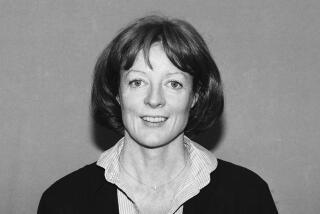Margaux Hemingway’s Death Ruled a Suicide
Actress and onetime supermodel Margaux Hemingway killed herself with a massive overdose of a barbiturate, the Los Angeles County coroner’s office announced Tuesday, adding her name to the grim litany of Hemingway family members who have taken their own lives.
Hemingway had about twice the lethal level of phenobarbital in her system when she died--so much of the drug that she succumbed before she could even digest all the pills in her stomach, coroner’s officials said.
The announcement came seven weeks after the body of the rangy entertainer with the sky-blue eyes was found by friends in her studio apartment, half a block from the beach in Santa Monica.
Police found no note or other evidence of suicide July 1, leaving the cause of Hemingway’s death a protracted mystery.
Highly publicized bouts with depression and alcoholism led to speculation that the 41-year-old actress had taken her own life. Her famous grandfather, author Ernest Hemingway, had killed himself 35 years ago with a shotgun blast to the head. His father, brother and sister had also died at their own hands.
But several friends and entertainment industry associates doubted that Margaux Hemingway would harm herself. They suggested that she had battled back from tough times and might have died from epilepsy, a disease she treated for many years with medication.
It took a series of toxicology tests to confirm the presence of a massive dose of the sedative in Hemingway’s system--10 times the amount that would be present from a prescribed dose. The equivalent of two pills remained undissolved in her stomach, the coroner’s office said.
“The high level of phenobarbital found in her system was the key finding that led to a determination that it was suicide,” said Scott Carrier, spokesman for the coroner’s office.
Carrier said the ruling was delayed because Hemingway’s body had decomposed so badly that pathologists could not obtain a standard blood sample. Instead, toxicologists relied on tissue samples from her brain, kidney and liver to measure the level of the drug.
Coroner’s investigators also revealed new details of the circumstances surrounding Hemingway’s death.
Just days before her body was discovered, the actress had been asking friends if they knew where she could obtain phenobarbital. She said she needed the drug for a trip to Germany, where she was scheduled to film a television program. Hemingway had a prescription for another medication, clonazepam, that epilepsy patients use to control seizures. But she had no prescription for phenobarbital. The two medications would typically not be given in combination, coroner’s officials said.
The coroner’s office said that when authorities entered Hemingway’s apartment, they found three vials of clonazepam--two empty and one partially filled. (On the day the body was discovered, Santa Monica police insisted they found no evidence of drugs.) Authorities also found an empty bottle of phenobarbital that was labeled for 100 tablets. The absence of a blood sample made it impossible to estimate how many of those tablets Hemingway had taken, Carrier said.
Hemingway seemed to obliquely refer to her own death in the last weeks of her life, speculating with friends about what the afterlife might hold.
“She never said, ‘I would like to kill myself’ or ‘It would be better if I was dead,’ ” said Craig Harvey, chief of investigations for the coroner’s office. “But she had spoken with friends about ‘the other side.’ And all her friends had encouraged her to stay here and work out her problems.”
Finally, Hemingway had put off appointments with friends that had been scheduled for the last weekend in June. Her body was found the following Monday, when her friend Judy Stabile became concerned that she could not reach Hemingway by phone.
Coroner’s officials said they will continue their investigation in an attempt to find out who supplied Hemingway with the pills that killed her. But because the phenobarbital bottle was not marked with a doctor’s or pharmacist’s name, it is unlikely the culprit who dispensed the medication without a prescription will be found, Harvey said.
Stabile, a Venice artist, said she is skeptical of the coroner’s finding.
“There was no telltale sign of suicide. No note, no anything,” Stabile said. “How do they know that she wanted to kill herself and that this wasn’t a mistake or something else?”
Hemingway’s manager, Graham Kaye, had discussed the afterlife with his client several months before her death. But he interpreted the talk as purely philosophical, a part of the actress’ continuing quest for spiritual truth.
“I think I might have raised the topic and she said she wasn’t afraid of dying,” Kaye said. “I think she said it might be an interesting place, where we all go. It was rhetorical.”
Hemingway had sprung to fame at 19 as a model, traveling from her native Idaho to New York, where she quickly became the $1-million spokeswoman for Babe perfume. But a fast life that ranged from Manhattan’s Studio 54 disco to the palaces of Europe was short-circuited by two divorces, alcoholism and bulimia.
A comeback in this decade began with a photo spread in Playboy. Hemingway had found steady work in B movies and infomercials.
Friends said she had only recently been reading the works of her grandfather, but remained estranged from her family. In a television interview just weeks before she died, Hemingway attributed her problems to a “lack of love” and a poor relationship with her mother.
Her family could not be reached for comment Tuesday.
More to Read
Sign up for Essential California
The most important California stories and recommendations in your inbox every morning.
You may occasionally receive promotional content from the Los Angeles Times.











